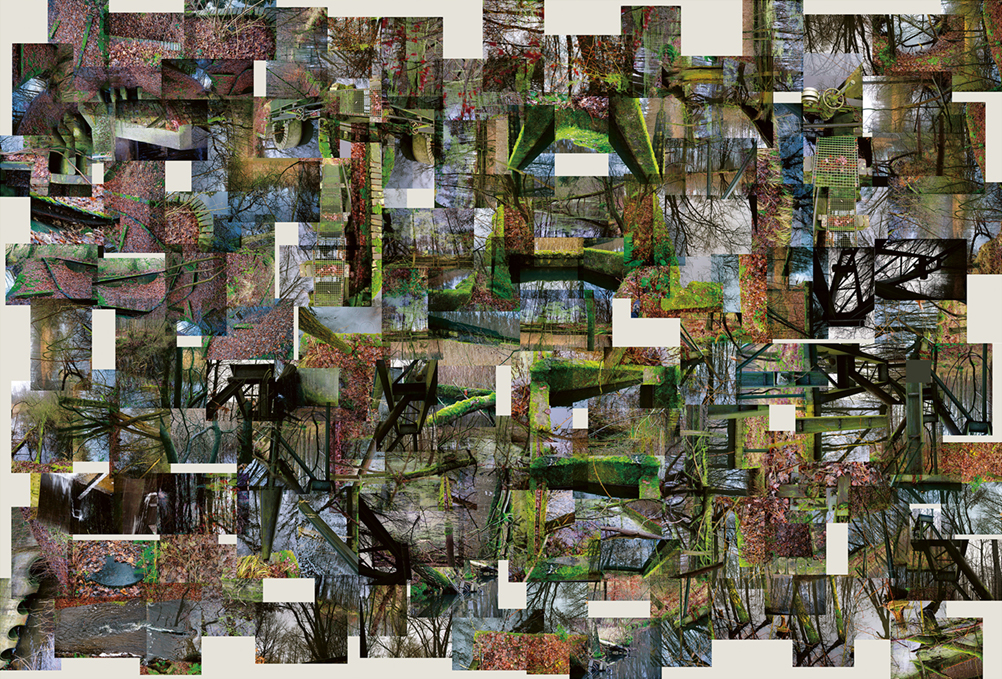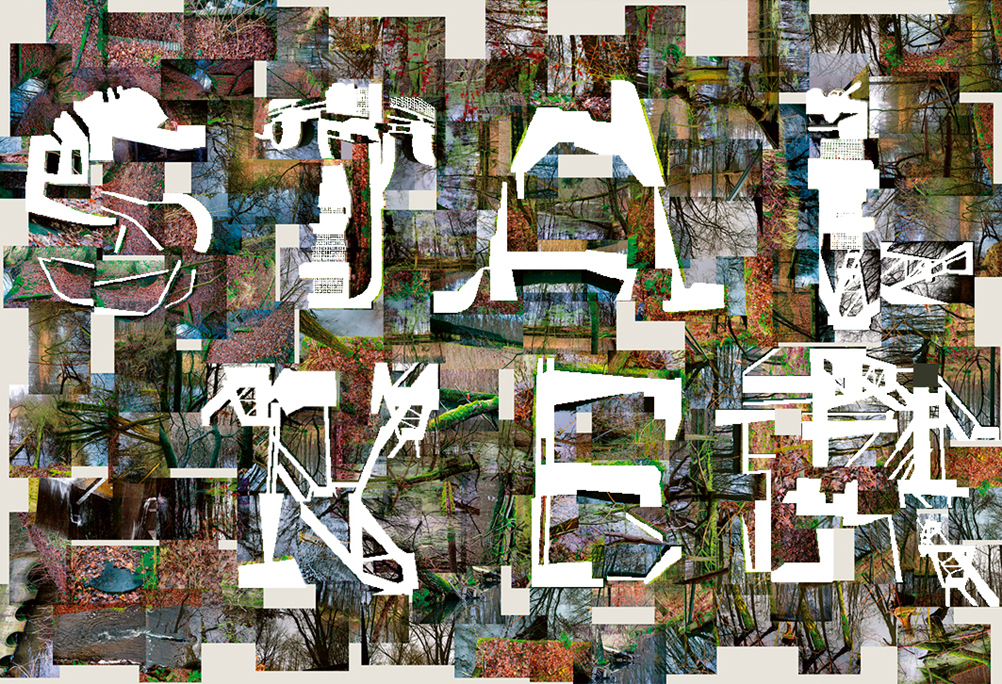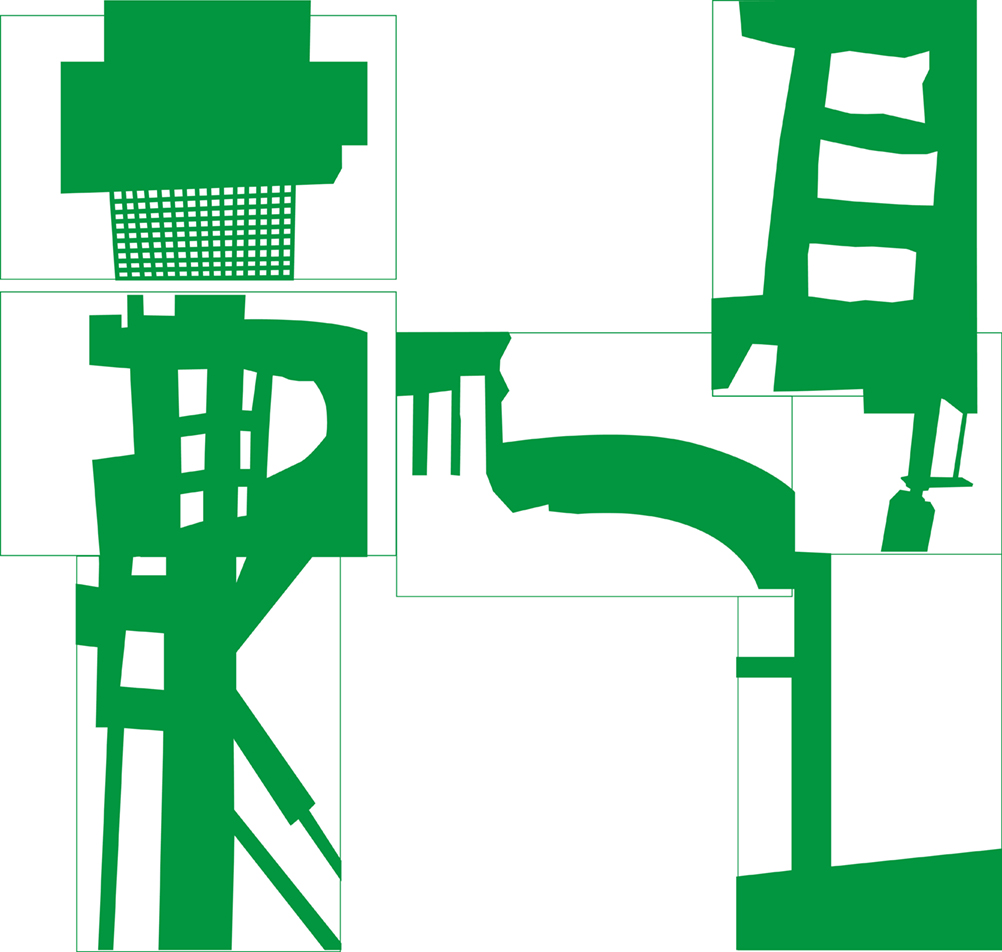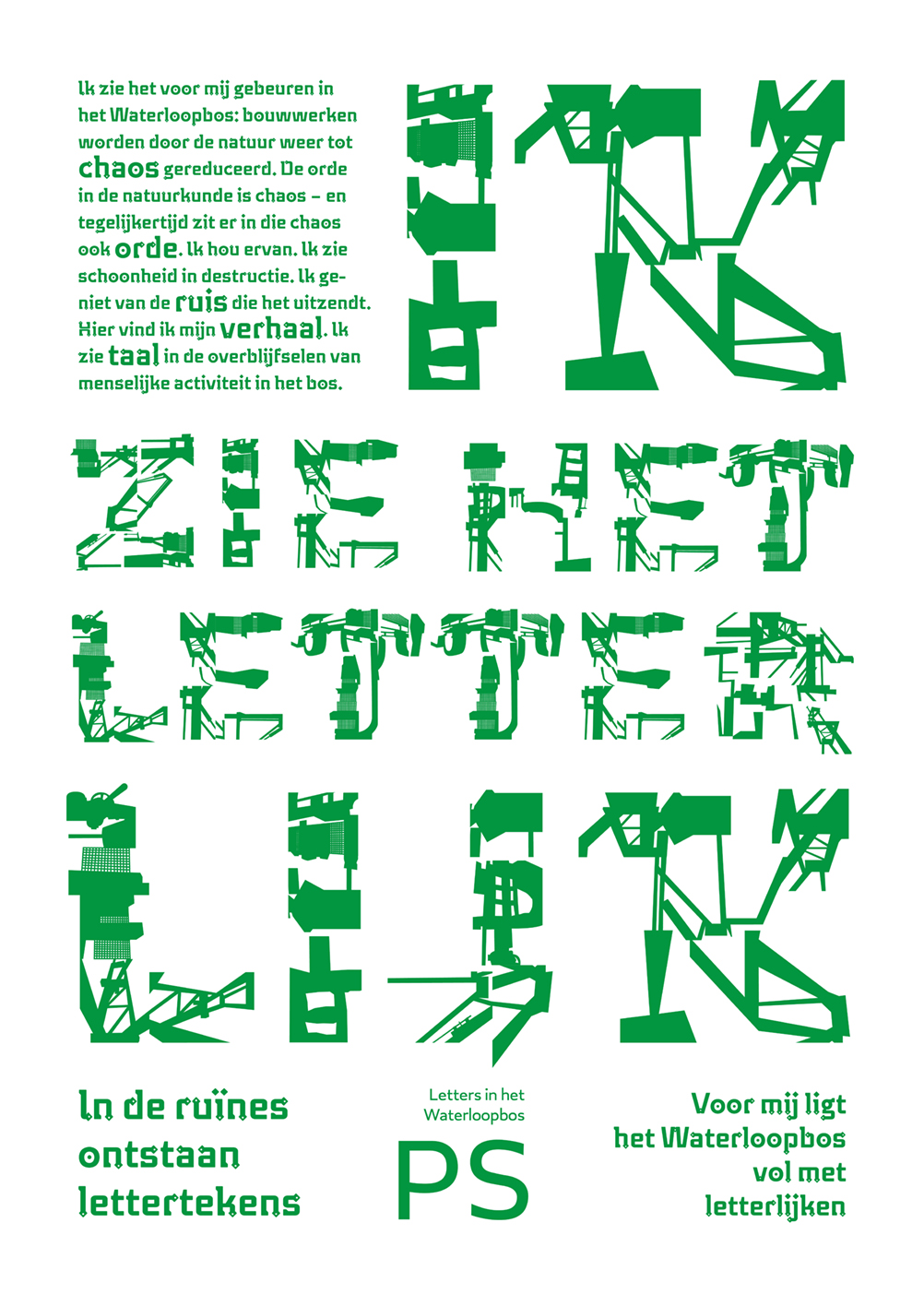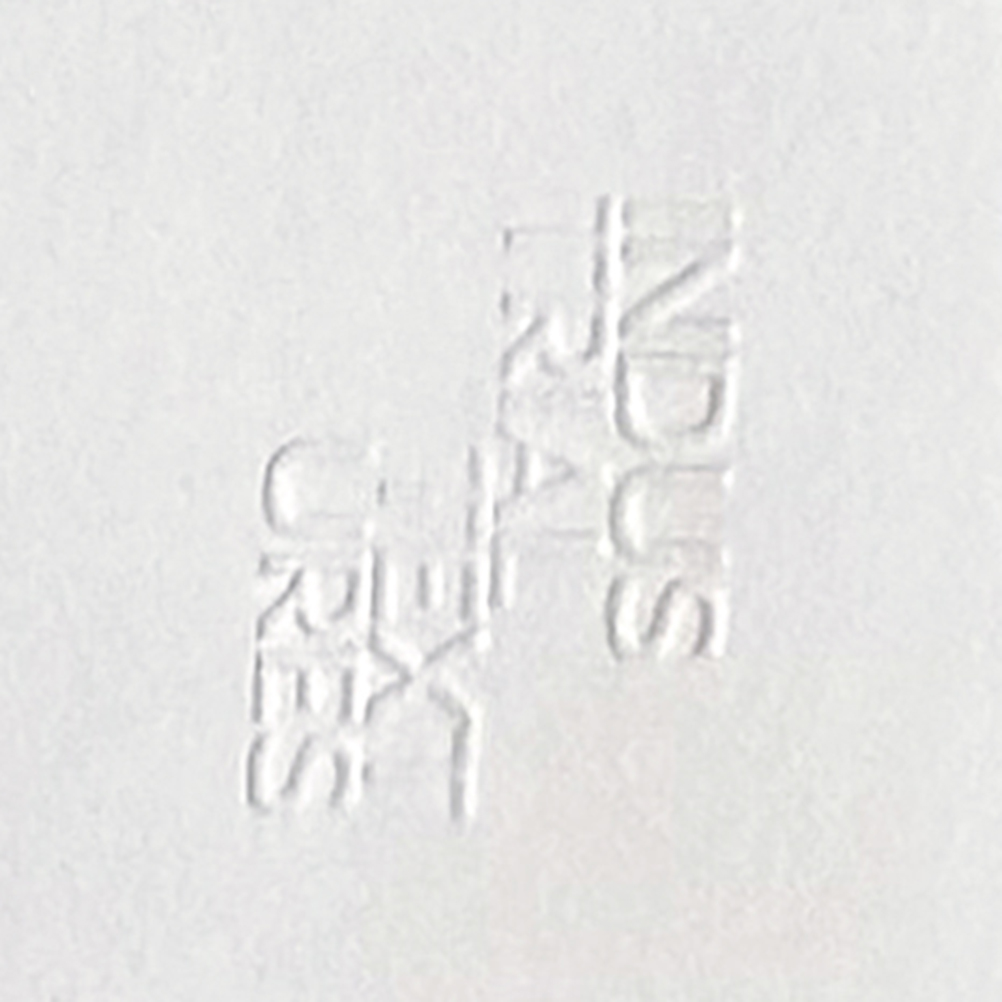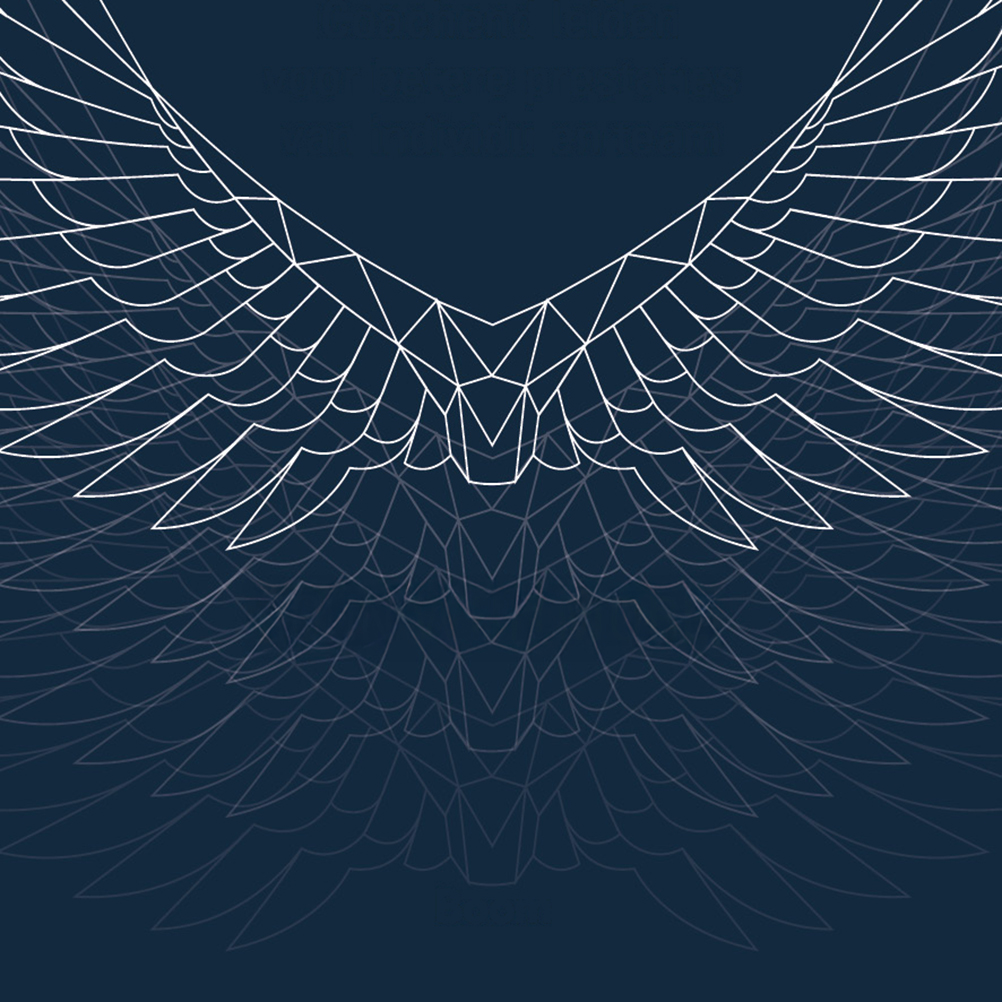Letters in the Waterloopbos (version 2)
Using a collage technique, five different typefaces were developed. Through this research, I set out to explore whether the characteristic structures of the Waterloopbos could lead to a unique, original ‘Waterloopbos alphabet’. Shown here is version two. The text below was previously published on the website lettersinhetwaterloopbos.nl. The word in this collage forms the basis for this second version of Letters in the Waterloopbos.
Brouwershavense Gat and Pentagoot.
Stalker, a film by Andrei Tarkovsky from 1979, evokes the same feeling. The film features green landscapes, decaying industrial complexes, mud, and mist. You constantly hear the sound of dripping and flowing water. Movements seem to unfold in slow motion—though you don’t consciously notice it. While watching this film, you lose all sense of time. I don’t know any other film that conveys that feeling better than Stalker.
I experienced that same sensation while walking through the models Brouwershavense Gat and Pentagoot. The Pentagootmodel lies in water and is overgrown with plants and trees. The boundaries between land and water are diffuse. Trees grow both on land and in the water. On one side of a brick wall just above the water surface, the water is completely covered in green moss; on the other side, it is clear blue. The traces of human-made structures now overtaken by nature gave me the feeling of being outside time and space. In the collage, I tried to let the boundaries between water, land, and sky blend into each other as much as possible.
Using a collage technique, five different typefaces were developed. Through this research, I set out to explore whether the characteristic structures of the Waterloopbos could lead to a unique, original ‘Waterloopbos alphabet’. Shown here is version two. The text below was previously published on the website lettersinhetwaterloopbos.nl. The word in this collage forms the basis for this second version of Letters in the Waterloopbos.
Work
Letters in the Waterloopbos (version 2)
Using a collage technique, five different typefaces were developed. Through this research, I set out to explore whether the characteristic structures of the Waterloopbos could lead to a unique, original ‘Waterloopbos alphabet’. Shown here is version two. The text below was previously published on the website lettersinhetwaterloopbos.nl. The word in this collage forms the basis for this second version of Letters in the Waterloopbos.
Brouwershavense Gat and Pentagoot.
Stalker, a film by Andrei Tarkovsky from 1979, evokes the same feeling. The film features green landscapes, decaying industrial complexes, mud, and mist. You constantly hear the sound of dripping and flowing water. Movements seem to unfold in slow motion—though you don’t consciously notice it. While watching this film, you lose all sense of time. I don’t know any other film that conveys that feeling better than Stalker.
I experienced that same sensation while walking through the models Brouwershavense Gat and Pentagoot. The Pentagootmodel lies in water and is overgrown with plants and trees. The boundaries between land and water are diffuse. Trees grow both on land and in the water. On one side of a brick wall just above the water surface, the water is completely covered in green moss; on the other side, it is clear blue. The traces of human-made structures now overtaken by nature gave me the feeling of being outside time and space. In the collage, I tried to let the boundaries between water, land, and sky blend into each other as much as possible.
Using a collage technique, five different typefaces were developed. Through this research, I set out to explore whether the characteristic structures of the Waterloopbos could lead to a unique, original ‘Waterloopbos alphabet’. Shown here is version two. The text below was previously published on the website lettersinhetwaterloopbos.nl. The word in this collage forms the basis for this second version of Letters in the Waterloopbos.
